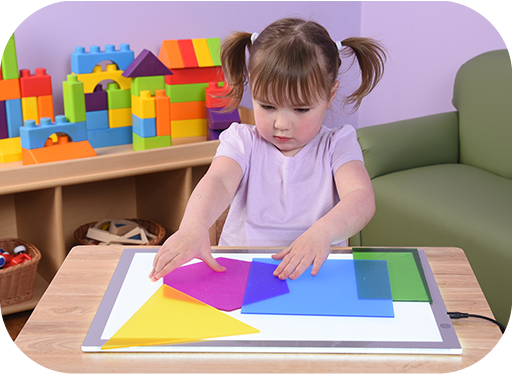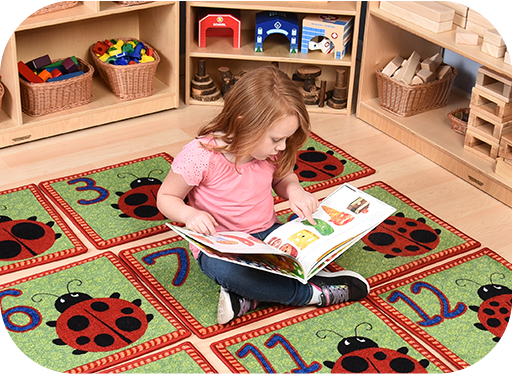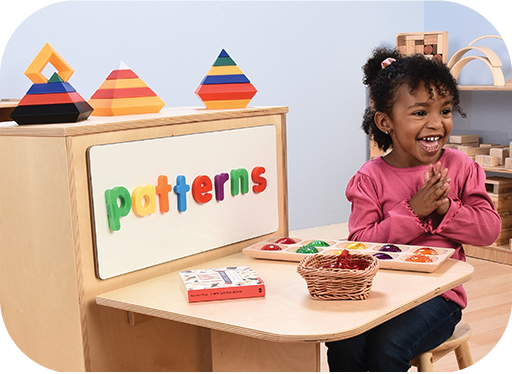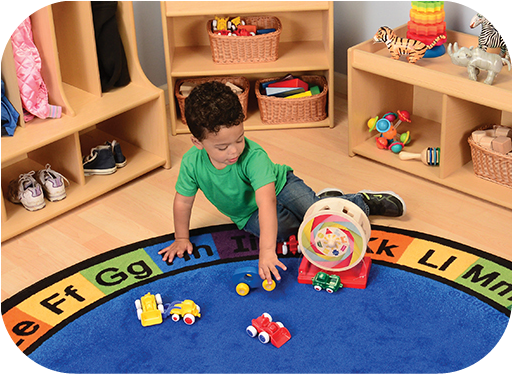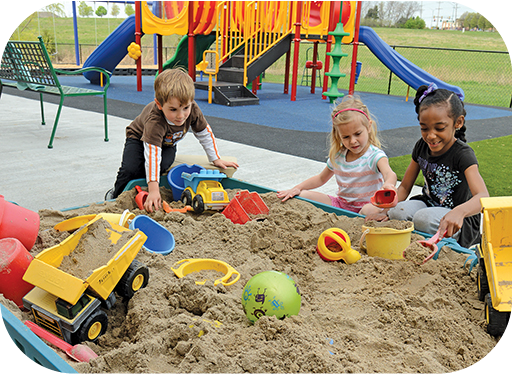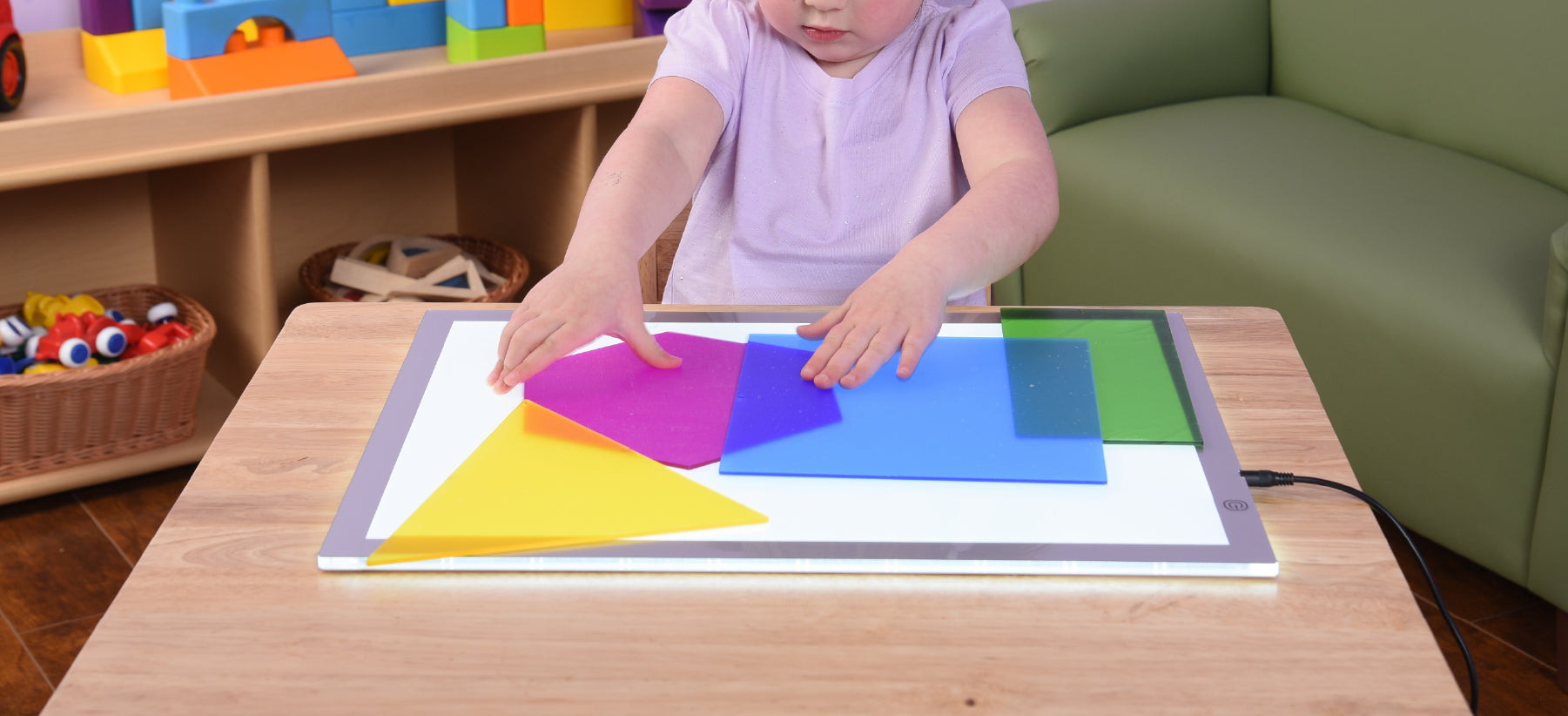
Exploring Light, Color, and Reflection
Preschool rooms are an environment filled with learning activities and opportunities. But providing that sense of wonder and curiosity takes more than a few materials. Working with light, color, and reflection stimulates wonder in children and promotes curiosity in the preschool classroom.
Light is magical to children. Whether a ray of sunshine flowing through a window or a beam from a flashlight, light can change the perspective of anything that it shines on or reflects off. Objects look different when light shines upon them. The change of position of light and its angles can darken or illuminate details that create wonder and foster creativity, further highlighting the benefits of light and shadow play. The juxtaposition of light shining and the dark shadows it creates provides a foundation for imagination to flourish and the play to be ever-changing. A different type of reflection occurs adding mirrors to the play. Laying an object on a mirror changes the perspective of the object and is different any way you turn it to observe it. Children marvel over the reflection in a mirror!
Adding color to light not only fosters further creativity but allows children to explore color changes, mixing colors, and a different perspective on colored light reflecting on objects. A simple way of exploring light and color with preschoolers is by using a light box or light table. These apparatuses allow light to diffuse through a translucent cover, permitting children to lay various materials on top of the light.
A light table aids in exploring light and color with preschoolers. Simple colored translucent pieces placed on the table encourages children to discover and create open-ended possibilities. Small, translucent, colored chips can become mosaic pieces in elaborate artwork. Colored stones lay the path for counting and creativity. Translucent blocks encourage 3-D building and a different perspective of light and reflection. Laying colored cellophane over the light sparks color mixing, discovering new colors, and seeing colors in different ways.
These captivating materials prompt exploration at the light table and, along with teacher facilitation, encourages deeper thinking. The benefits of light and shadow play provoke such questions such as: How do the objects change when placed on the light table? Are the colors different shades? Can you change the color of an object by placing another object on top? How does the light change when an object is placed on top? How did the object look different on the mirror? How can you change the light on the mirror?
Whether a diffused light from a light table, a mirror, a ray of sunshine, or dark shadows, children are captivated by the changes in color, shadows, and light as it relates to objects placed in different ways and different positions. Teachers should provide these materials for children and let their wonder and curiosity shine with the light.


